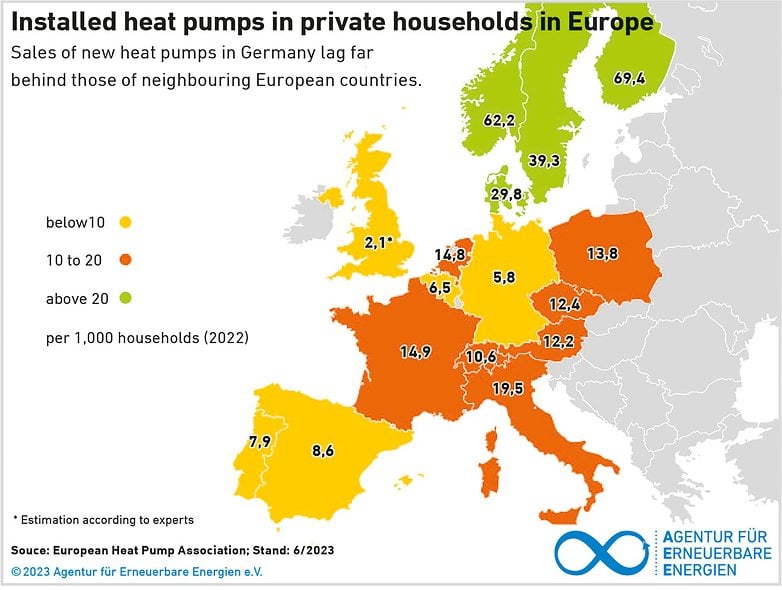
Trapped in Cold, Unaffordable Homes
Across Europe, millions are feeling the chill—literally. The investigative group CORRECTIV.Europa has dropped some eye-opening data on heating habits across the continent, and the trend is worrying. Since 2021, around 14 million more people have been unable to keep their homes warm through the winter. That brings the total to nearly 47 million, with some regions seeing up to 30% of the population affected.
So, what’s driving this energy poverty crisis? Experts point to a triple threat: skyrocketing energy costs, low incomes, and poorly insulated, aging buildings. It’s a perfect storm hitting low-income households and single parents the hardest.
Energy prices across Europe have been spiraling upward since 2020. Natural gas, for example, cost around twice as much in 2024 as it did just four years earlier. The surge started as demand shot up after pandemic lockdowns eased, but things escalated fast when Russia invaded Ukraine in 2022, triggering an all-out energy crisis across the continent.
But it’s not just energy bills putting the squeeze on households. Inflation has jacked up the cost of everyday living, while wages haven’t kept pace. According to the European Commission’s 2024 labor market report, real wages in the EU are actually down 1.1% compared to 2019. That’s less money to work with, just as everything gets more expensive.
The result? For many families, it’s come down to brutal choices. As Dr. Aravinda Guntupalli, a Global Public Health expert at the University of Aberdeen, puts it: “People in Europe are now having to choose between eating and heating.” It’s a harsh reality—and one that’s forcing millions to rethink what it means to stay warm.
Cost of Living: Europe’s Growing Anxiety
It’s no secret—the cost of living has become one of the biggest worries for people across the EU. And it’s not just about tightening the belt; it’s starting to shake up politics, too. “People are frustrated. That frustration can fuel political dissatisfaction, mistrust in parties, and, ultimately, instability,” explains Dr. Aravinda Guntupalli.
We’re already seeing the pressure boil over. In some countries, rising prices have sparked street protests. The latest data from CORRECTIV.Europa paints a clear picture: this isn’t just a minor inconvenience—it’s a crisis. No one in Europe should have to ask themselves, “Can I afford to heat my home or buy food this month?” Yet, that’s the reality for more than 1 in 10 people.
The situation is especially tough in the warmer regions—countries like Spain, Greece, Portugal, Bulgaria, Italy, and Lithuania are hit hardest by energy poverty. Why? Many buildings there lack proper insulation or heating systems, while much of Eastern Europe struggles with outdated, energy-draining infrastructure.
And here’s the tough pill to swallow: it’s likely to get worse.
Brace yourself—heating and fuel costs in the EU are expected to climb even higher in the coming years. From 2027 onward, a higher CO₂ price will roll out across the bloc, with projections suggesting costs could soar from €100 to several hundred euros per tonne of CO₂ by 2030 (€100/$105). No matter where you are—France, Germany, Spain, Italy, or anywhere else—this will hit your wallet.
So, what can you do? For now, it often comes down to making every euro stretch further. But let’s be real—that’s not a long-term solution. Policymakers need to step up with bold action to tackle this crisis head-on.
Because this isn’t just about comfort—it’s about health. Living in cold, damp homes increases the risk of mental health struggles, chronic respiratory infections, and cardiovascular diseases like heart attacks. In severe cases, it can lead to long-term disability—or even premature death.
This is more than an economic issue—it’s a public health emergency. And for millions, the stakes couldn’t be higher.
Energy Crisis Sparks a Renewables Boom
When Russia invaded Ukraine in early 2022, energy prices across Europe went through the roof. Faced with skyrocketing bills, households scrambled to take control of their own energy supply. Portable power stations and solar panels flew off the shelves as people looked for ways to reduce their reliance on the grid. Electric radiators also saw a surge in demand—driven by fears that traditional heating systems would become unaffordable.
But the real star of the show in 2023? Heat pumps.
These modern heating systems have quickly become a poster child for the energy transition. Why? Because they’re ridiculously efficient—generating up to five units of heat from a single unit of electricity. If homes across Europe shifted to heat pumps and other cutting-edge systems, heating costs could drop to as little as a third—or even a fifth—of today’s average.
No wonder sales are booming, especially as fossil fuel prices remain painfully high.
Scandinavia is leading the charge:
- Finland: 69.4 heat pumps per 1,000 households
- Norway: 62.2 per 1,000
- Sweden: 39.3 per 1,000
But not every country is keeping pace. The UK is trailing at the back with just 2.1 heat pumps per 1,000 households, while Germany isn’t much better at 5.8. Countries like the Netherlands (6.5), Portugal (7.9), and Spain (8.6) also lag behind—ironically, the same regions now facing some of the worst energy poverty.
By contrast, France (14.9) and Italy (19.5) sit more comfortably in the European midfield, showing that progress is possible even outside the cold north.
These numbers, sourced from the European Heat Pump Association (EHPA), make one thing clear: When heating bills skyrocket, the future starts looking electric.

Tenants Stuck in the Cost Trap–Modern Heating Out of Reach
Upgrading to a sleek, energy-efficient heating system sounds great—until you see the price tag. For many households across Europe, it’s simply not an option. And the costs vary wildly depending on where you live.
- Germany? Expect to fork over €30,000 ($31,401) or more for a heat pump installation.
- France? You’re looking at around €18,000 ($18,841).
- UK? Some companies advertise heat pump swaps for as little as £7,500 ($9,426).
Even in countries where prices are lower, it’s still a serious financial commitment. Sure, if you own your home and can afford the upfront cost, the long-term savings on energy bills make the investment worthwhile. But that’s a big “if.”
For renters, it’s a different story altogether—and it’s not a good one. Tenants are stuck in an energy cost trap. They rely on their landlords to modernize outdated, inefficient heating systems. But here’s the problem: landlords don’t feel the pinch from high-energy bills—tenants do. So, there’s little incentive for property owners to invest in upgrades.
And this creates a vicious cycle:
- Tenants pay sky-high heating costs.
- They can’t save enough to buy a place of their own.
- They remain stuck in inefficient, expensive-to-heat homes.
It’s not just low-income earners or single parents feeling this squeeze. Even middle-income renters are watching their savings evaporate into heating bills—leaving them trapped in rentals they can’t afford to escape.
Breaking out of this cost trap will take more than just personal budgeting. It’s going to require policies that push landlords to upgrade their properties and make energy efficiency a standard, not a luxury.






